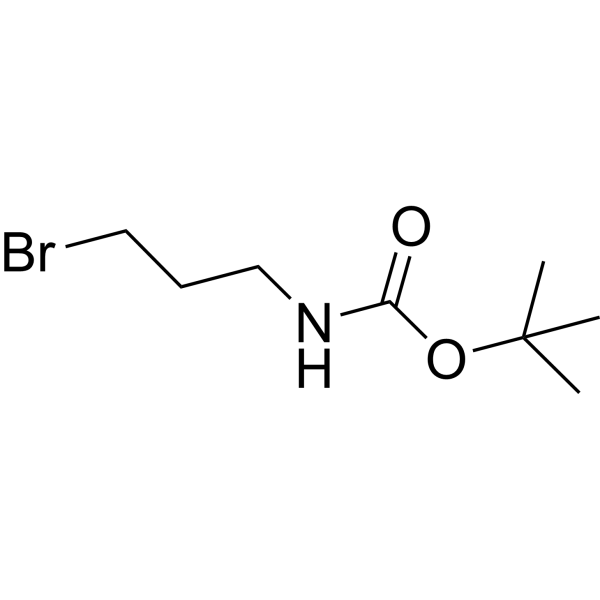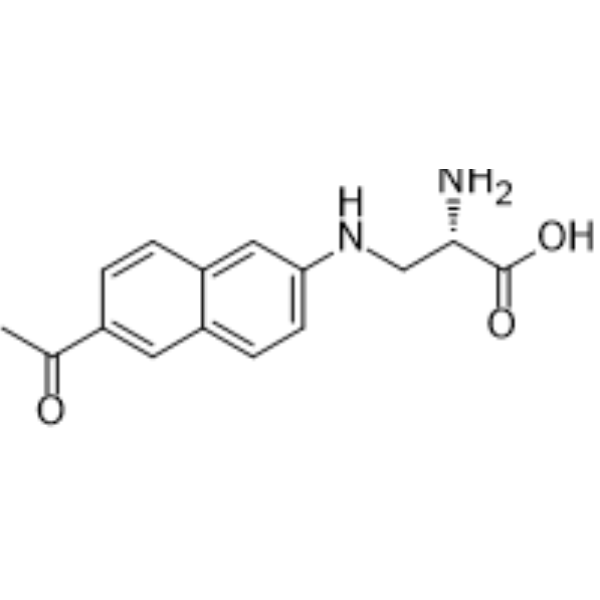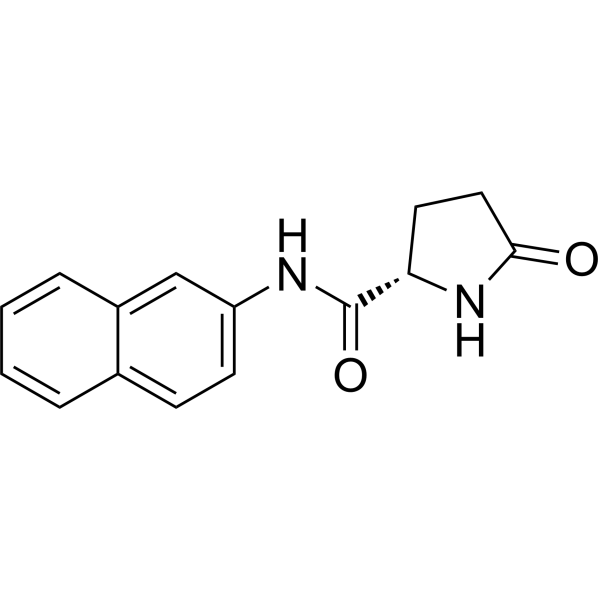- Anti-infection
- Antibody-drug Conjugate/ADC Related
- Apoptosis
- Autophagy
- Cell Cycle/DNA Damage
- Cytoskeleton
- Epigenetics
- GPCR/G Protein
- Immunology/Inflammation
- JAK/STAT Signaling
- MAPK/ERK Pathway
- Membrane Transporter/Ion Channel
- Metabolic Enzyme/Protease
- Neuronal Signaling
- NF-κB
- PI3K/Akt/mTOR
- PROTAC
- Protein Tyrosine Kinase/RTK
- Stem Cell/Wnt
- TGF-beta/Smad
- Vitamin D Related/Nuclear Receptor
- Others
Anti-infection
Apoptosis
Cell Cycle/DNA Damage
Epigenetics
GPCR/G Protein
- 5-HT Receptor
- Adenylate Cyclase
- Adhesion G Protein-coupled Receptors (AGPCRs)
- Adrenergic Receptor
- Amylin Receptor
- Angiotensin Receptor
- Apelin Receptor (APJ)
- Arf Family GTPase
- Arrestin
- Bombesin Receptor
- Bradykinin Receptor
- Cannabinoid Receptor
- CaSR
- CCR
- CGRP Receptor
- Chemerin Receptor
- Cholecystokinin Receptor
- CRFR
- CXCR
- EBI2/GPR183
Immunology/Inflammation
Membrane Transporter/Ion Channel
Metabolic Enzyme/Protease
- 11β-HSD
- 15-PGDH
- 17β-HSD
- 5 alpha Reductase
- Acetolactate Synthase (ALS)
- Acetyl-CoA Carboxylase
- Acetyl-CoA synthetase
- Acyltransferase
- ADAMTS
- Adiponectin Receptor
- Aldehyde Dehydrogenase (ALDH)
- Aldose Reductase
- Amine N-methyltransferase
- Aminoacyl-tRNA Synthetase
- Aminopeptidase
- Aminotransferases (Transaminases)
- Amylases
- Angiotensin-converting Enzyme (ACE)
- ANGPTL
- Apolipoprotein
Neuronal Signaling
Protein Tyrosine Kinase/RTK
Stem Cell/Wnt
- Compound Screening Libraries
- Bioactive Screening Libraries
- •Bioactive Compound Library
- Drug Repurposing Series
- •FDA-Approved Drug Library
- •Drug Repurposing Compound Library
- Natural Products Series
- •Natural Product Library
- •Natural Product-like Compound Library
- Metabolism Series
- •Human Endogenous Metabolite Compound Library
- Disease Related Compound Libraries
- Signaling Pathway Series
- Fragment Libraries
- Diversity Compound Libraries
- •50K Diversity Library
- •5K Scaffold Library
- •3D Diverse Fragment Library
- Virtual Screening
- •50K Virtual Diversity Library
- •10M Virtual Diversity Library
- Recombinant Proteins
- Cytokines and Growth Factors
- Immune Checkpoint Proteins
- CAR-T Related Proteins
- CD Antigens
- Fc Receptors
- Receptor Proteins
- Enzymes & Regulators
- Complement System
- Ubiquitin Related Proteins
- Viral Proteins
- Biotinylated Proteins
- Fluorescent-labeled Recombinant Proteins
- GMP-grade Proteins
- Animal-free Recombinant Proteins
- Protein Expression Service
- Custom Synthesis Service
- ADC-Related Custom Services
- PROTAC-Related Custom Services
- Cytokines and Growth Factors
- Immune Checkpoint Proteins
- CAR-T Related Proteins
- CD Antigens
- Fc Receptors
- Receptor Proteins
- Enzymes & Regulators
- Complement System
- Ubiquitin Related Proteins
- Viral Proteins
- Biotinylated Proteins
- Fluorescent-labeled Recombinant Proteins
- GMP-grade Proteins
- Animal-free Recombinant Proteins
- Others
- View More
CAR-T Related Proteins
- CD27 Ligand/CD70
- CD4
- CD19
- CD27 Ligand/CD70
- CD123
- CD138/Syndecan-1
- Epithelial Cell Adhesion Molecule (EpCAM)
- Folate Receptor 1
- GPC-3
- Guanylate Cyclase 2C
- ErbB2/HER2
- ErbB3/HER3
- c-Met/HGFR
- MSLN
- CA-125
- ROR1
- CEACAM-5
- CD314/NKG2D
- Prostate Specific Membrane Antigen
- CD319/SLAMF7
- TROP-2
- Siglec-6
- Folate Receptor alpha (FR-alpha)
- CD314/NKG2D
- Siglec-3/CD33
- CD27 Ligand/CD70
- CD319/SLAMF7
- ErbB2/HER2
- Siglec-3/CD33
- CD7
- MUC-1/CD227
CD Antigens
- T Cell CD Proteins
- B Cell CD Proteins
- NK Cell CD Proteins
- Macrophage CD Proteins
- Monocyte CD Proteins
- Stem Cell CD Proteins
- Platelet CD Proteins
- Erythrocyte CD Proteins
- Dendritic Cell CD Proteins
- Epithelial cell CD Proteins
- Endothelial cell CD Proteins
- Signal Transduction-related CD Proteins
- Cell Adhesion-related CD Proteins
Receptor Proteins
- Receptor Tyrosine Kinases
- Receptor Serine/Threonine Kinases
- Receptor Tyrosine Phosphatase
- Receptor Guanylyl Cyclase Family
- Cell Adhesion Molecules (CAMs)
- G-Protein-Coupled Receptors (GPCRs)
- Nuclear Receptor Superfamily
- Pattern Recognition Receptors
- Notch family
- Siglec
- Leukocyte Immunoglobin-like Receptors
- Killer-Cell Immunoglobulin-like Receptors
- Cytokine Receptors
Enzymes & Regulators
- Oxidoreductases (EC 1)
- Transferases (EC 2)
- Hydrolases (EC 3)
- Lyases (EC 4)
- Isomerases (EC 5)
- Ligases (EC 6)
- Translocases (EC 7)
- Matrix Metalloproteinases
- ADAMs/ADAMTSs
- Cathepsin
- Carboxypeptidase
- Angiotensin-converting Enzymes
- Caspase
- Carbonic Anhydrase
- Serine/Threonine Kinase Proteins
- Protein Tyrosine Kinases
- Phosphatase
- Topoisomerase
- Protease Inhibitors
- Protein Kinase Inhibitor Peptide (PKI)
- Cyclin-Dependent Kinase Inhibitor Proteins
- Cystatin Family
- Molecular Biology
- •Nucleic Acid Gel Electrophoresis
- •Vector Construction
- •Restriction Endonuclease
- •Materials
- •PCR & qPCR
- •RT-PCR
- •Sequencing
- Protein Biology
- •Protein Sample Preparation
- •Protein Purification
- •Protein Electrophoresis & WB
- •Labeling Kit
- •Multiple Fluorescent Staining
- •Immunoassay
- Cell Biology
- •Cell Culture
- •Cell Analysis
- •3D Cell Culture
- •Cell Isolation
- View More
- Custom Synthesis Service
- Bulk and Custom Synthesis Service
- ADC-Related Custom Services
- PROTAC-Related Custom Services
- Custom Reference Standard Products
- Custom Peptide Synthesis
- Protein Expression Service
- Recombinant Antibody Expression Service
- Protein Crystal Structure Elucidation
- Oligonucleotide Synthesis
- Fluorescent labeling Service
- Custom Synthesis of Stable Isotope-Labeled Compounds
- One-stop CDMO Service
- One-stop Compound Screening Platform
- Virtual Screening
- Molecular dynamics simulation
- Cell-based Compound Screening
- Ion Channel Screening
- Kinase Screening Service
- Surface Plasmon Resonance (SPR) Assay Service
- GPCR Bioassay Screening Services
- Nuclear Receptor Screening Services
- Affinity Mass Spectrometry
- DEL Synthesis and Screening
- Molecular Interaction Assay Service
- Drug Target Identification Service
- AI-Driven Drug Screening
- Molarity Calculator
- Dilution Calculator








































































































































































































































































































































![(S)-2-Amino-3-(benzo[b]thiophen-3-yl)propanoic acid](http://file.medchemexpress.eu/product_pic/hy-w022796.gif)









acetic acid](http://file.medchemexpress.eu/product_pic/hy-78105.gif)




























































![(αR)-α-[[(1,1-Dimethylethoxy)carbonyl]amino]benzeneacetic acid](http://file.medchemexpress.eu/product_pic/hy-34663.gif)


































![N-[2-(Fmoc-amino)-ethyl]-Gly-O-tBu hydrochloride](http://file.medchemexpress.eu/product_pic/hy-w141923.gif)






























































![(S)-2-[(tert-Butoxycarbonyl)amino]-3-iodopropionic acid methyl ester](http://file.medchemexpress.eu/product_pic/hy-z0424.gif)























![(αS)-α-[[(9H-Fluoren-9-ylmethoxy)carbonyl]amino]-2-pyridinepropanoic acid](http://file.medchemexpress.eu/product_pic/hy-34540.gif)

![2-[Methyl(nitroso)amino]acetic acid-d3](http://file.medchemexpress.eu/product_pic/hy-w188178s.gif)












![(2S)-2-[(tert-Butoxycarbonyl)amino]-3-(3-fluorophenyl)propionic acid](http://file.medchemexpress.eu/product_pic/hy-79288.gif)


























![5-[Boc(methyl)amino]pentanal](http://file.medchemexpress.eu/product_pic/hy-138520.gif)






![(2R)-2-[(3,5-Dinitrobenzoyl)amino]-2-phenyl-acetic acid](http://file.medchemexpress.eu/product_pic/hy-w125501.gif)

![(2S)-2-[(tert-Butoxycarbonyl)amino]-3-(3,4-difluorophenyl)propionic acid](http://file.medchemexpress.eu/product_pic/hy-79165.gif)







































































![N-[2-[(1-Oxohexadecyl)amino]ethyl]octadecanamide](http://file.medchemexpress.eu/product_pic/hy-155935.gif)

















![Carbonylhydrido(tetrahydroborato)[bis(2-diphenylphosphinoethyl) aMino]ruthenium(II)](http://file.medchemexpress.eu/product_pic/hy-w033559.gif)




























![2-[(Azidoacetyl)amino]-2-deoxy-D-glucose, 98%](http://file.medchemexpress.eu/product_pic/hy-w039950.gif)






![(2S)-4-(Benzyloxy)-2-[(tert-butoxycarbonyl)amino]-4-oxobutanoic acid](http://file.medchemexpress.eu/product_pic/hy-z0615.gif)


















![5-[3-[(Trifluoroacetyl)amino]propyl]uridine](http://file.medchemexpress.eu/product_pic/hy-152543.gif)



















![(2S)-4-(benzyloxy)-2-{[(9H-fluoren-9-ylmethoxy)carbonyl]amino}-4-oxobutanoic acid](http://file.medchemexpress.eu/product_pic/hy-w002301.gif)






![2-[(Azidoacety)amino]-2-deoxy-D-galactose](http://file.medchemexpress.eu/product_pic/hy-w039921.gif)








![2-[(1H-Indol-3-ylcarbonyl)amino]benzoic acid](http://file.medchemexpress.eu/product_pic/hy-n1643.gif)



![16-[[2-(Methylamino)-2-oxoacetyl]amino]-11Z-hexadecenoic acid](http://file.medchemexpress.eu/product_pic/hy-120500.gif)


![2′-Amino-5′-O-[bis(4-methoxyphenyl)phenylmethyl]-2′-deoxyuridine](http://file.medchemexpress.eu/product_pic/hy-154424.gif)

















![6-Amino-9-[2-deoxy-β-D-ribofuranosyl]-9H-purine](http://file.medchemexpress.eu/product_pic/hy-154610.gif)













![N3-[3-(tert-Butoxycarbonyl)amino]propyluridine](http://file.medchemexpress.eu/product_pic/hy-154738.gif)












amino]-3-methylbutanoic acid](http://file.medchemexpress.eu/product_pic/hy-41051.gif)




































![1-Octylnonyl 8-[[8-[(1-ethylnonyl)oxy]-8-oxooctyl](2-hydroxyethyl)amino]octanoate](http://file.medchemexpress.eu/product_pic/hy-147018.gif)


























amino]nonadecanedioate](http://file.medchemexpress.eu/product_pic/hy-134783.gif)








![2-Amino-3-methyl-3H-imidazo[4,5-f]quinoline-d3](http://file.medchemexpress.eu/product_pic/hy-w706319.gif)












![6-Amino-4-hydrozino-2-(β-D-ribofuranosyl)-2H-pyrazolo[3,4-d]pyrimidine](http://file.medchemexpress.eu/product_pic/hy-152410.gif)

![6-Amino-4-hydroxyamino-2-(β-D-ribofuranosyl)-2H-pyrazolo[3,4-d]pyrimidine](http://file.medchemexpress.eu/product_pic/hy-152414.gif)
![4-Amino-1-(β-D-ribofuranosyl)-7H-pyrrolo[2.3-d]pyrimidine-5-carboxamide](http://file.medchemexpress.eu/product_pic/hy-152685.gif)
![6-Amino-4-methoxy-2-(β-D-ribofuranosyl)-2H-pyrazolo[3,4-d]pyrimidine](http://file.medchemexpress.eu/product_pic/hy-152398.gif)

![6-Amino-3-ethynyl-4-methoxy-1-(β-D-ribofuranosyl)-1H-pyrazolo[3,4-d]pyrimidine](http://file.medchemexpress.eu/product_pic/hy-152438.gif)





![2-Amino-3-methyl-3H-imidazo[4,5-f]quinoline-2-13C](http://file.medchemexpress.eu/product_pic/hy-w779193.gif)

![5-[3-[(2,2,2-Trifluoroacetyl)amino]-1-propyn-1-yl]uridine](http://file.medchemexpress.eu/product_pic/hy-152580.gif)
![4-Amino-5-cyano-1- (β-D-ribofuranosyl)-7H-pyrrolo[2,3-d] pyrimidine](http://file.medchemexpress.eu/product_pic/hy-152680.gif)



![2’-Deoxy-2’-fluoro-N3-(2S)-(2-amino-3-carbonyl] propyl-beta-D-arabinouridine](http://file.medchemexpress.eu/product_pic/hy-154662.gif)












![6-Amino-4-methoxy-1-(2-deoxy-a-D-ribofuranosyl)-1H-pyrazolo[3,4-d]pyrimidine](http://file.medchemexpress.eu/product_pic/hy-154122.gif)








![6-Amino-4-hydrozino-1-(2-deoxy-β-D-ribofuranosyl)-1H-pyrazolo[3,4-d]pyrimidine](http://file.medchemexpress.eu/product_pic/hy-154047.gif)
![2-Pyridinesulfonamide, N-[[(4,6-dimethoxy-2-pyrimidinyl)amino]carbonyl]-3-(2,2,2-trifluoroethoxy)-d6](http://file.medchemexpress.eu/product_pic/hy-165702s.gif)
![4-Amino-5-cyano-1-(2-deoxy-β-D-ribofuranosyl)-7H-pyrrolo[2,3-d]pyrimidine](http://file.medchemexpress.eu/product_pic/hy-154002.gif)
![6-Amino-4-methoxy-1-(2-deoxy-β-D-ribofuranosyl)-1H-pyrazolo[3,4-d]pyrimidine](http://file.medchemexpress.eu/product_pic/hy-154008.gif)

![5-[[Methyl(2,2,2-trifluoroacetyl)amino]methyl]-2-thiouridine](http://file.medchemexpress.eu/product_pic/hy-152735.gif)









![4-Amino-6-bromo-5-cyano-1-(beta-D-ribofuranosyl)-7H-pyrrolo[2.3-d]pyrimidine](http://file.medchemexpress.eu/product_pic/hy-154005.gif)












![4-Amino-1-(2-C-methyl-β-D-ribofuranosyl)-1H-pyrrolo[2,3-d]pyrimidine-5-carbonitrile](http://file.medchemexpress.eu/product_pic/hy-152718.gif)

![2’-Deoxy-2’-fluoro-N3-[3-(tert-butoxycarbonyl) amino]propyluridine](http://file.medchemexpress.eu/product_pic/hy-154725.gif)

![6-Amino-1,2-dihydro-2-β-D-ribofuranosyl-4H-pyrazolo[3,4-d]pyrimidin-4-one](http://file.medchemexpress.eu/product_pic/hy-152405.gif)

![2-Deoxy-2-[[(4-methoxyphenyl)methylene]amino]-β-D-glucopyranose](http://file.medchemexpress.eu/product_pic/hy-w354410.gif)

![4-Amino-5-iodo-7-(2-β-C-methyl-β-D-ribofuranosyl)-7H-pyrrolo[2,3-d]pyrimidine](http://file.medchemexpress.eu/product_pic/hy-152819.gif)






![6-Amino-3-(furan-2-yl)-4-methoxy-1-(β-D-ribofuranosyl)-1H-pyrazolo[3,4-d]pyrimidine](http://file.medchemexpress.eu/product_pic/hy-152443.gif)







![2-Amino-3,7-dihydro-5-iodo-7-β-D-ribofuranosyl-4H-pyrrolo[2,3-d]pyrimidin-4-one](http://file.medchemexpress.eu/product_pic/hy-152616.gif)

![N3-(2S)-[2-(tert-Butoxycarbonyl)amino-3-(tert-butoxy carbonyl)]propyluridine](http://file.medchemexpress.eu/product_pic/hy-154647.gif)







![Lactalbumin B (50-53) Alpha [Lactorphin Alpha], bovine](http://file.medchemexpress.eu/product_pic/hy-p3976.gif)




![2-[[[4-(Acetylamino)phenyl]sulfonyl][(4-fluorophenyl)methyl]amino]-N-(9-ethyl-9H-carbazol-3-yl)acetamide](http://file.medchemexpress.eu/product_pic/hy-402277.gif)







![2-Amino-6-chloro-9-[(2,3,5-tri-O-benzoyl-2-C-Methyl-beta-D-ribofuranosyl)]-9H-purine](http://file.medchemexpress.eu/product_pic/hy-w069715.gif)





![N2-[(N,N-Dimethyl amino]methylene-N1-methyl-2’-O-methylguanosine](http://file.medchemexpress.eu/product_pic/hy-152547.gif)






![N1-Methyl-N3-[(2S)-2-(t-butoxycarbonyl)amino-3-(t-butoxycarbonyl)] propylpseudouridine](http://file.medchemexpress.eu/product_pic/hy-152657.gif)







![2’-Deoxy-2’-fluoro-N3-(2S)-[2-(tert-butoxy-carbonyl)-amino-3-carbonyl]propyluridine](http://file.medchemexpress.eu/product_pic/hy-154724.gif)




















































![O-Acetyl-N-[(1,1-dimethylethoxy)carbonyl]-L-threonine](http://file.medchemexpress.eu/product_pic/hy-21983.gif)



























































































![10-(4-(Bis(2-hydroxyethyl)amino)phenyl)-5,5-difluoro-1,3,7,9-tetramethyl-5H-dipyrrolo[1,2-c:2',1'-f][1,3,2]diazaborinin-4-ium-5-uide](http://file.medchemexpress.eu/product_pic/hy-d1551.gif)















































































































































































































































































































































![[Ala286]-Calmodulin-Dependent Protein Kinase II (281-302)](http://file.medchemexpress.eu/product_pic/hy-p10499.gif)




















































































































































![[Leu5]-Enkephalin](http://file.medchemexpress.eu/product_pic/hy-p0288.gif)

































































![[Leu5]-Enkephalin TFA](http://file.medchemexpress.eu/product_pic/hy-p0288a.gif)
































































































































































































































































































































![[Glu1]-Fibrinopeptide B](http://file.medchemexpress.eu/product_pic/hy-p0308.gif)


































































![Tris[[2-(tert-butoxycarbonyl)ethoxy]methyl]methylamine](http://file.medchemexpress.eu/product_pic/hy-21577.gif)




































![9-β-D-[2'-Fluoro-2'-deoxy-arabinofuranosyl]-guanin](http://file.medchemexpress.eu/product_pic/hy-w334680.gif)
























































































































































































































































































![N6-[[(4-Azidophenyl)methoxy]carbonyl]-L-lysine](http://file.medchemexpress.eu/product_pic/hy-154835.gif)













































































![Cucurbit[7]uril](http://file.medchemexpress.eu/product_pic/hy-104086.gif)








































































































![L-Phenylalanine, N-[N-[(1,1-dimethylethoxy)carbonyl]-D-leucyl]-, phenylmethyl ester](http://file.medchemexpress.eu/product_pic/hy-79909.gif)






![N-[(Phenylmethoxy)carbonyl]-L-leucine](http://file.medchemexpress.eu/product_pic/hy-y0555.gif)
![D-Phenylalanine, N-[N-[(1,1-dimethylethoxy)carbonyl]-L-leucyl]-, phenylmethyl ester](http://file.medchemexpress.eu/product_pic/hy-79930.gif)

![((4'-Chloro-[1,1'-biphenyl]-4-yl)sulfonyl)phenylalanine](http://file.medchemexpress.eu/product_pic/hy-w030573.gif)





































































































































































![N-[4-(Morpholin-4-ylsulfonyl)benzoyl]glycine](http://file.medchemexpress.eu/product_pic/hy-w027230.gif)





























































![N-[(9H-Fluoren-9-ylmethoxy)carbonyl]-O-(phenylmethyl)-D-serine](http://file.medchemexpress.eu/product_pic/hy-w022226.gif)



































![L-Alanine, N-[(S)-(4-nitrophenoxy)phenoxyphosphinyl]-, 1-methylethyl ester](http://file.medchemexpress.eu/product_pic/hy-79333.gif)











![1-[(3,5-Dimethylisoxazol-4-yl)sulfonyl]proline](http://file.medchemexpress.eu/product_pic/hy-w026508.gif)
















![N-[(9H-Fluoren-9-ylmethoxy)carbonyl]-3-methoxy-L-phenylalanine](http://file.medchemexpress.eu/product_pic/hy-w022228.gif)













































































































![D-Phenylalanine, N-[N-[(1,1-dimethylethoxy)carbonyl]-D-leucyl]-, phenylmethyl ester](http://file.medchemexpress.eu/product_pic/hy-79919.gif)
















































































































![N-[(9H-fluoren-9-ylmethoxy)carbonyl]-N-methylalanine](http://file.medchemexpress.eu/product_pic/hy-w022134.gif)

































![N-[(Benzyloxy)carbonyl]-L-alanine](http://file.medchemexpress.eu/product_pic/hy-y0007.gif)



















































![Boc-(R)-4-[4-(trifluoromethyl)benzyl]-L-proline](http://file.medchemexpress.eu/product_pic/hy-w142047.gif)























































































































































![N-[(1,1-Dimethylethoxy)carbonyl]-L-leucyl-L-leucine](http://file.medchemexpress.eu/product_pic/hy-78008.gif)
















































































![L-Alloisoleucine, N-[(phenylmethoxy)carbonyl]-](http://file.medchemexpress.eu/product_pic/hy-i1061.gif)

































![N-[(9H-Fluoren-9-ylmethoxy)carbonyl]-N-methyl-D-phenylalanine](http://file.medchemexpress.eu/product_pic/hy-34470.gif)












![N-[(9H-Fluoren-9-ylmethoxy)carbonyl]-5-methyl-L-norleucine](http://file.medchemexpress.eu/product_pic/hy-22002.gif)


















![[Deamino-Pen1,Val4,D-Arg8]-vasopressin](http://file.medchemexpress.eu/product_pic/hy-p10046.gif)








![N-[(9H-Fluoren-9-ylmethoxy)carbonyl]-O-(phenylmethyl)-L-serine](http://file.medchemexpress.eu/product_pic/hy-w008977.gif)





![Fmoc-Thr[PO(OBzl)OH]-OH](http://file.medchemexpress.eu/product_pic/hy-w010770.gif)





























































































































![N6-[(2E)-1-Oxo-2-buten-1-yl]-L-lysine](http://file.medchemexpress.eu/product_pic/hy-w039947.gif)






































![N-[3-(2-Furyl)acryloyl]-Phe-Gly-Gly](http://file.medchemexpress.eu/product_pic/hy-w010991.gif)











